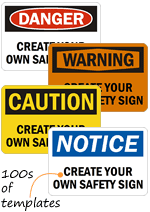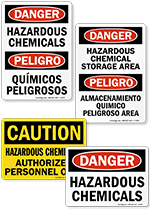Growing opposition to OSHA’s proposed silica rule
As the public comment period for the proposed crystalline silica rule closes, several big organizations have unanimously disapproved the Occupational Safety and Health Administration’s (OSHA) recommended regulations. OSHA estimates that the rule, once implemented, would significantly decrease the number of deaths caused each year due to silica dust hazard. However, industry experts think the proposed recommendations are unrealistic and would prove exorbitant for businesses, if approved.
Provisions of the proposed rule
OSHA proposed a new rule to limit crystalline silica in September last year, as the current permissible exposure limits (PELs) had not been updated since 1971. The current PEL for general industry is 100 micrograms per cubic meter of air and 250 micrograms per cubic meter of air for construction and shipyard industry. The new proposal brings in a revised PEL for all industries, which limits exposures to 50 micrograms of respirable crystalline silica per cubic meter of air, averaged over an 8-hour day.
Besides lower PEL, OSHA also recommends provisions for measuring workers’ silica exposure, implementation of methods to reduce exposure, providing medical examinations to workers with high silica exposures, and training people exposed to the hazardous dust. In an August 23 conference call with reporters, OSHA chief David Michaels said, “It’s absolutely necessary to go below the current PEL.”

OSHA suggests dust control tools to reduce crystalline silica exposure like grinders with attached vacuum dust collection system or tools that apply water to the operation area to reduce flying dust. Image by: Grand Canyon National Park
OSHA has proposed the silica rule after an exhaustive review of several factors including health hazards of exposure to crystalline silica, related industries, and recommendations from business representatives. OSHA says that the rule will save around 700 lives and prevent 1,600 new cases of silicosis per year, once all the regulations are met.
Industry stands against proposed silica rule while public health officials are supportive
There were hundreds of comments released after the February 11, 2014 deadline, and several trade associations have unanimously commented against OSHA’s silica rule. On the other side of the argument, public health organizations, labor groups, and safety advocates have supported it. Favoring OSHA’s move, Peg Seminario, director of safety and health for the AFL-CIO, says, “Basically, we think it’s a solid proposal.”
OSHA estimates that after implementation, the proposed crystalline silica rule will cost $637 million annually, but provide huge net benefits per year, averaging from $2.8 billion to $4.7 billion.
But industry experts have derided OSHA’s estimations. According to the American Chemistry Council evaluations in 2011, lowering the PEL and adding ancillary provisions to the existing silica standard would cost $5.1 billion per year, eight times greater than OSHA’s estimate. “The OSHA cost estimate is a joke,” says Henry Chajet, a partner at Jackson Lewis LLP. Big players like the National Association of Home Builders and Associated Builders and Contractors, Inc have also criticized the rule.
OSHA’s long-running campaign for setting revised silica standards on worksites might hit a snag after the closure of the comment period. Bloomberg BNA reports, “OSHA must respond to the criticisms and recommendations contained in the public comments.” Jeffrey Lubbers, administrative law professor at American University’s Washington College of Law, says that OSHA will be addressing the comment period feedback with the Office of Management and Budget (OMB), the agency that reviews the final rule before it is published, as well as federal judges and those who must comply with the new standards, in a March meeting. March 18 will mark the beginning of the public hearing period for the proposed final rule.
Category: Construction, News, News / New Products, OSHA















